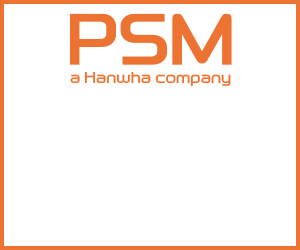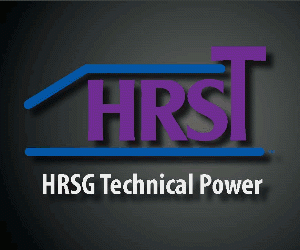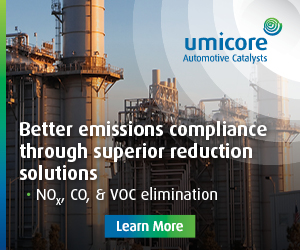European Technology Development Ltd’s (ETD Consulting), International Conference on Power Plant Operation and Flexibility, held in London in July 2018, covered recent developments in plant materials, operation, inspection, maintenance, and costs related to both baseload and cycling operation for different types of plants—including combined cycles. Participants included plant owners/operators, consultants, researchers, manufacturers, and inspection-agency professionals.
Conference organizer Dr Ahmed Shibli, managing director of ETD Consulting, pointed to the following global trends:
-
- Europe is going through the same market changes as North America. Cycling is global.
- Some countries have more cycling and low-load experience than North America—such as those with geothermal and hydroelectric plants that cause varied operation of fuel-fired assets. This experience base has wide-ranging value.
- Europe and Japan are taking active roles in high-temperature materials development and testing.
Shibli’s primary purpose in arranging the meeting was to help identify the basic causes of equipment problems in both baseload and cycling units, and to clarify modifications, inspections, and procedures that will minimize costs.
Who wins when plant components fail? A question asked by one of the first speakers, David Allen of Impact PowerTech Ltd (UK), “Who wins when plant components fail?” set the tone for the conference and was the perfect segue for his presentation on the upgrading of materials and welds. Allen’s next question was equally pointed: “Why do we so often stick with last-century technology?”
The speaker began with a philosophical look at planned obsolescence. He cited interesting examples from the automobile, white goods, and communications industries. Participants were captivated, and on alert for more.
Allen did not claim current evidence of planned obsolescence within the power industry, and in fact stated that a manufacturer with a unique design is careful to maintain its good reputation.
But he did note some dangers similar to those expressed by Eskom (South Africa) at last year’s Air-Cooled Condenser Users Group meeting in Las Vegas. To wit, we all experience the ongoing pressures for low bids, rapid investment payback, and increasingly stringent trading conditions.
The potential menace is commonly applied standards that fail to ensure the most reliable long-term component operation. In other words, once a supplier meets the standards or codes in the specification, further refinements or improvements can become less important (and more expensive) to the supplier. The same is true on qualifying bids for component supply. Providers’ reputations are at less risk as long as they meet the qualifications.
Perhaps because “innovation brings risk,” or because “regular repair and maintenance activities provide jobs,” we could be letting ourselves down, suggested Allen. And in his words, “We are still building new plants with 40-year-old materials (P91, Alloy 617) and ignoring the newer, potentially better alternatives.”
And how has market-driven flexible operation changed things? “Cycling makes it worse!”
Details have become clear, stressed Allen:
-
- Flexible operation only makes service exposure more onerous.
- Thermomechanical transients cause additional cyclic loading, which is conducive to the following: 1. Mechanical and thermal fatigue cracking, 2. Creep-fatigue cracking (with creep ductility exhaustion attributed to repeated transient creep strain), and 3. Creep cracking (with creep life reduction caused by increased loading).
- Poor temperature control can severely shorten creep life.
- Creep issues do not go away; they get much worse.
- Fatigue brings additional challenges.
- Sticking with last-century technology increases risk!
So how do owners/operators minimize the potential costs? Allen outlined some thoughts:
- 1. Design out “at-risk features” (thickness and materials mismatches, closely spaced header stubs, dissimilar-metal welds, etc).
- 2. Improve temperature control during startups and transients.
- 3. Make components thinner—perhaps.
-
- Thinner components minimize thermal/mechanical mismatch loading and may therefore perform better when fatigue is a problem.
- But thinner components will experience higher pressure stresses and may therefore perform worse when creep is a problem.
Allen reviewed typical owner/operator options. Some choose to continue operation until plant end-of-life, mindful primarily of safety. Many take the financial hit and accept high inspection, repair, and replacement costs. The better strategy is to install upgraded retrofit components with stronger materials and welds at the same thickness (better for creep) or thinner (better for fatigue).
He then presented details and examples of current P92 materials with good-quality heat treatment, labeling this “a materials upgrade solution that is ready now.” Following in-depth discussions of various manufacturing methods, heats, ductility, and tensile strength, he asked participants to “Stop fearing P92!”
And he gave specifics from a recent review, showing a “strong correlation between heat treatment and ductility.” He concluded that “normalizing is about twice as important as tempering. Under-normalizing is the main problem. Under-tempering makes the problem worse.” And “notably, normalizing time is more important than temperature.”
-
- The four most creep-brittle casts, with long-term average area reduction (Ra) in creep test values in the range of 3% to 12%, all had normalizing times in the range of 0.2 to 0.6 hours.
- The seven next most creep-brittle casts, all with Ra values in the range of 18% to 24%, had normalizing times of 0.2 to 1.0 hours.
- No cast with a normalizing equivalent to 2 hours at 1050C or 1 hour at 1070C had a long-term Ra value lower than 28%.
Summary: This indicates that simple controls on allowable heat treatment can resolve the Grade 92 creep brittleness concern. Further work is ongoing to assess very long-term ductility out to 100,000 hours, and beyond.
Allen next looked at “near-future MarBN, a novel high-alloy steel for powerplants.” This material, being studied primarily in Japan and the UK, is martensite plus boron and nitrogen. The process involves “careful microalloying with boron and limited nitrogen for high creep strength.” Allen listed temperature capability of P92 as about 20 deg C better than P91 and “expects temperature capability of MarBN to be at least 25 deg C better than P92.”
But the microalloying process is extremely sensitive.
Following discussions on welding processes, he offered the following conclusions:
- 1. “Today we can replace P91 with P92.
- 2. Tomorrow we could use MarBN for even greater security.”





